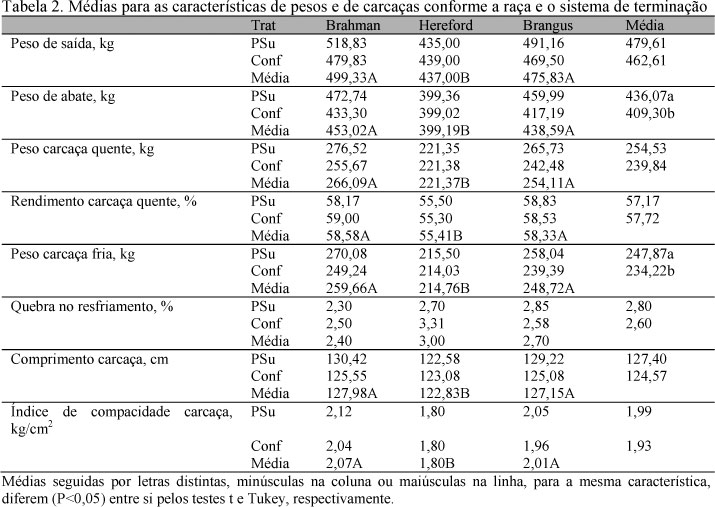The productive performance and carcass of the 36 Brahman (Bh), Brangus (Bg) and adapted Hereford (He) steers finished on feedlot (FD) or on rotational grazing with supplementation system (GS) were evaluated. The animals were slaughtered when the subcutaneous fat thickness was over 4mm. The feedlot diet had a forage: concentrate of 60:40 (in dry matter) 13% crude protein (CP), 62% of NDT. The mombaça gras CP level was 7% and 54% of NDT. The supplement had supplied 24% of CP and 76% of NDT. A significant difference was observed for the average daily gain, being 1,200kg/head/day for FD steers and 0.675kg/head/day for GS steers. The effect of breed on slaughter weight was observed, being 445.8kg for Bh and Bg and 399.19kg for He. The hot dressing percentage was higher for Bh and Bg than for He, 58.4% vs 55.4%. The rib eye area was higher for Bg, 76.42cm² and tenderness measured by the shear force was lower for FD steers, at 3.71 than for GS steers, at 4.89. The subcutaneous fat thickness was higher for FD steers, at 4.64 than for GS steers, at 3.39mm.
cut; hindquarter; weight gain; ternderness; forequarter




